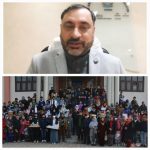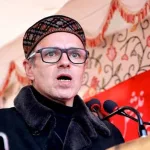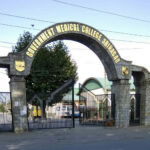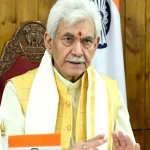The phrase “Where medicine ends, prayer begins” resonates deeply in the corridors of hospitals, where science and faith often intersect in the pursuit of healing. Hospitals, with their solemn air of hope and despair, are places where the walls have witnessed more sincere prayers than any place of worship. Here, the limitations of medicine and the boundless hope of prayer intertwine, offering a holistic perspective on healing. This piece explores the intricate relationship between medical science and spirituality, underscoring the human need for something beyond material remedies—an intangible, yet powerful, force of faith.
The Dual Realms of Healing: Medicine and Prayer
Modern medicine, with its remarkable advancements, offers solutions to countless ailments. From antibiotics to organ transplants, the realm of healthcare has transformed lives. However, despite its achievements, medicine has its limits. Not every illness can be cured, not every patient can be saved, and not every pain can be alleviated through scientific means. It is in these moments that many patients and their families turn to prayer, seeking solace, strength, and a sense of control in an otherwise uncontrollable situation. Prayer represents a bridge between the finite and the infinite. While medicine addresses the physical aspects of illness, prayer caters to the emotional and spiritual dimensions. These two domains are not mutually exclusive but rather complementary, forming a comprehensive approach to healing.
The Power of Faith in Healing
Faith plays a significant role in the recovery process. Numerous studies have shown that patients who engage in prayer or possess a strong sense of spirituality often report better mental and emotional well-being. This positive outlook can influence physical health as well, fostering resilience and a stronger will to fight illness.
For example, in cases of chronic illnesses like cancer, where treatments can be grueling, prayer often provides a sense of hope and purpose. It helps patients endure pain, accept outcomes, and find meaning even in adversity. Faith-based coping mechanisms have also been associated with lower levels of stress, anxiety, and depression, all of which contribute to better overall health outcomes.
Healing Beyond the Physical
Healing is more than curing the body; it is about restoring the mind and spirit. Hospitals frequently witness this multifaceted healing process. A patient awaiting surgery might find solace in the whispered prayers of a loved one. A grieving family may find comfort in spiritual rituals. Even healthcare providers often find themselves offering words of prayer or encouragement to patients, recognizing the power of hope and positivity in fostering recovery.
This healing beyond the physical extends to the caregivers as well. Doctors and nurses, despite their reliance on science, often acknowledge the limits of their abilities. Prayer and faith help them navigate the emotional toll of their profession, offering a source of strength in the face of loss and uncertainty.
When Hospitals Become Houses of Prayer
Hospitals are places of heightened emotions, where life and death coexist in stark proximity. It is no wonder that these institutions become arenas for spiritual expression. The sterile environment of a hospital room, far from being devoid of emotion, is often charged with the most profound acts of faith and devotion.
Unlike traditional places of worship, hospitals are universal in their appeal. People of all religions, beliefs, and walks of life converge in these spaces, united by the shared desire for healing. Here, prayers transcend boundaries, becoming a common language of hope and resilience.
Stories of Faith and Healing
The stories of patients and families who rely on prayer in addition to medicine are both moving and inspiring. Take for instance, the tale of a critically ill patient whose recovery defied medical predictions. While doctors worked tirelessly to save his life, his family prayed continuously, finding strength in their faith. When the patient eventually recovered, his family attributed his survival not just to medical intervention but also to divine intervention.
Similarly, the story of a terminally ill cancer patient who spent her final days surrounded by loved ones, engaged in prayer and spiritual reflection, highlights the peace that faith can bring. Although medicine could no longer cure the patient, prayer helped him and his family find closure and acceptance.
The Intersection of Medicine and Spirituality
The integration of spirituality into healthcare is gaining recognition in many parts of the world. Hospitals are increasingly offering chaplaincy services, meditation rooms, and spaces for spiritual practices, acknowledging the importance of holistic care. This shift reflects an understanding that health is not merely the absence of disease but a state of complete physical, mental, and spiritual well-being.
Incorporating spirituality into patient care does not undermine the importance of evidence-based medicine. Instead, it complements it by addressing the needs of the whole person. Doctors and nurses trained to respect and understand the spiritual beliefs of their patients can provide more compassionate and effective care.
The Universality of Prayer
One of the most profound aspects of prayer in the context of healing is its universality. Regardless of religion, culture, or background, prayer is a common response to suffering and uncertainty. A Christian may recite the Lord’s Prayer, a Muslim may recite verses from the Quran, a Hindu may chant mantras, and an atheist may meditate or express their thoughts to the universe. The underlying essence remains the same—a quest for strength, comfort, and hope.
This universality makes prayer a unifying force in hospitals, where people from diverse backgrounds come together. It also highlights the deeply human need to connect with something greater than oneself in times of vulnerability.
Science Acknowledging the Power of Faith
The relationship between science and faith has often been viewed as adversarial, but in reality, they can coexist harmoniously. Many doctors and researchers acknowledge the benefits of prayer and spirituality in the healing process. For instance, studies have documented the placebo effect, where a patient’s belief in the efficacy of a treatment can lead to actual improvements in health. This phenomenon underscores the power of the mind and spirit in influencing physical outcomes. Furthermore, healthcare providers increasingly recognize the role of spiritual care in improving patient satisfaction and outcomes. While medicine addresses the tangible, faith nurtures the intangible, creating a balanced approach to healing.
Where medicine ends, prayer begins—not as a sign of surrender but as an acknowledgment of the human spirit’s resilience and capacity for hope. Healing is not confined to bottles, tablets, creams, or injections; it is a complex interplay of physical, emotional, and spiritual factors. In hospitals, where life’s fragility is most apparent, prayer becomes a beacon of hope, bridging the gap between what science can achieve and what the soul seeks.
As we continue to advance in medical science, let us not forget the profound power of faith and prayer in the journey of healing. They remind us of our shared humanity, our need for connection, and the boundless possibilities of hope.
(Author besides being a medical doctor at Mubarak hospital, is very active in positive perception management of various moral, social and religious issues. He can be reached at [email protected] & #drfiazfazili on twitter)








